![が – Marking the Subject ('Who/What') in Japanese [JLPT N5]](http://hirakan.com/cdn/shop/articles/ga-subject-marker_60f30f70-6ca5-47ee-9a00-3646195d7d3c.jpg?v=1761386355&width=1100)
が – Marking the Subject ('Who/What') in Japanese [JLPT N5]
Share
Quick Summary
- Meaning: The particle が marks the subject of a sentence and highlights new or focused information (answers “who?” or “what?”).
- How to Use: Attach が directly to the noun (or question word) that is the subject.
Example:
- 母がロボットです。
- Haha ga robotto desu.
- My mom is a robot.
Overview
The particle が is a subject marker. It tells us who or what is doing the action, who or what exists, or which thing the sentence is focusing on. It often introduces new information, or gives a clear answer to “who?” or “what?” questions. Compared to は (topic marker), which talks about the general topic, が puts a spotlight on the subject itself, especially when it’s the key, new, or surprising part of the message.
Use が in these common situations:
- Existence/location: with あります (arimasu, to exist for things) and います (imasu, to exist for people/animals), the thing that exists takes が.
- Likes/skills/wants: with adjectives like 好きです (suki desu, like; to like), きらいです (kirai desu, dislike), 上手です (jouzu desu, to be good at), 下手です (heta desu, to be bad at), ほしいです (hoshii desu, want), the liked/wanted/skillful thing takes が.
- Question words: だれ (dare, who), なに (nani, what), どれ (dore, which) usually take が when they are the subject.
Example:
- 月にチーズがあります。
- Tsuki ni chiizu ga arimasu.
- There is cheese on the moon.
Structure / Formation
Base Patterns
- N が V
- N が i-adj です
- N が na-adj です
- Place に N が いる / ある
- Person は N が 好きです / きらいです / 上手です / 下手です / ほしいです
- だれ / なに / どれ + が + V
How It Works
N が V puts the focus on the subject N as the doer or the key part of the sentence. Use it when introducing a new subject or answering “who/what?”
N が i-adj です / N が na-adj です highlights which thing has that quality. For example, “Which is spicy?” → “This one が spicy.”
Place に N が いる / ある states that N exists in a place. Use いる (iru) for people/animals and ある (aru) for things/plants.
Person は N が 好きです / ほしいです etc. marks N (the liked/wanted/skill thing) with が. The person is often the topic with は.
Question words + が is standard when the subject is unknown: だれ (dare, who) が, なに (nani, what) が, どれ (dore, which) が.
Mini Patterns and Roles
- Place に N が ある / いる
- Person は N が 好きです / きらいです
- N1 / N2 が i-adj です
- だれ / なに / どれ が V-ま
Question Words + が (Quick Guide)
| Form | Meaning |
|---|---|
| だれが (dare ga) | who (as subject) |
| なにが (nani ga) | what (as subject) |
| どれが (dore ga) | which (as subject, among choices) |
Usage Tips
- Use が to introduce or emphasize the subject; use は to talk about an already known topic.
- With あります (arimasu) and います (imasu), the existing thing takes が; the location uses に.
- With 好きです (suki desu) and ほしいです (hoshii desu), the liked/wanted thing is marked by が.
Example:
- 私の金魚が有名です。
- Watashi no kingyo ga yuumei desu.
- My goldfish is famous.
Example Sentences
- 図書館にカバがいます。
- Toshokan ni kaba ga imasu.
- There is a hippo in the library.
- 私は宿題が好きです。
- Watashi wa shukudai ga suki desu.
- I like homework.
- だれが忍者ですか。
- Dare ga ninja desu ka.
- Who is the ninja?
- このケーキが辛いです。
- Kono keeki ga karai desu.
- This cake is spicy.
- 猫が新聞を読みます。
- Neko ga shinbun o yomimasu.
- The cat reads the newspaper.
Quick Practice
(Answers and explanations are right under this section.)
Multiple-Choice
-
Choose the correct sentence that uses が to mark the subject of existence.
- A) 冷蔵庫にUFOがあります。(Reizouko ni UFO ga arimasu.)
- B) 冷蔵庫はUFOをあります。(Reizouko wa UFO o arimasu.)
- C) 冷蔵庫でUFOとあります。(Reizouko de UFO to arimasu.)
- D) 冷蔵庫にUFOやあります。(Reizouko ni UFO ya arimasu.)
-
Choose the sentence that correctly uses が with 上手です.
- A) 私のハムスターはダンスが上手です。(Watashi no hamusutaa wa dansu ga jouzu desu.)
- B) 私のハムスターはダンスを上手です。(Watashi no hamusutaa wa dansu o jouzu desu.)
- C) 私のハムスターとダンスが上手です。(Watashi no hamusutaa to dansu ga jouzu desu.)
- D) 私のハムスターはダンスや上手です。(Watashi no hamusutaa wa dansu ya jouzu desu.)
-
Which sentence correctly asks “Which is spicy?” using が?
- A) どれが辛いですか。(Dore ga karai desu ka.)
- B) どれは辛いですか。(Dore wa karai desu ka.)
- C) どれを辛いですか。(Dore o karai desu ka.)
- D) どれや辛いですか。(Dore ya karai desu ka.)
-
Choose the correct particle for the blank.
空にドラゴン_____います。(Sora ni doragon _____ imasu.)- A) が
- B) を
- C) は
- D) と
-
Choose the correct sentence using ほしいです with が.
- A) わたしはタイムマシンがほしいです。(Watashi wa taimu mashin ga hoshii desu.)
- B) わたしがタイムマシンをほしいです。(Watashi ga taimu mashin o hoshii desu.)
- C) わたしはタイムマシンとほしいです。(Watashi wa taimu mashin to hoshii desu.)
- D) わたしはタイムマシンでもほしいです。(Watashi wa taimu mashin demo hoshii desu.)
Spot-the-Error
-
Spot the error: Which ONE sentence has a mistake with が?
- A) だれは宇宙人ですか。(Dare wa uchuujin desu ka.)
- B) だれがヒーローですか。(Dare ga hiroo desu ka.)
- C) 私は先生が好きです。(Watashi wa sensei ga suki desu.)
-
Spot the error: Which ONE sentence has a mistake with が/あります・います?
- A) 公園にロボットをあります。(Kouen ni robotto o arimasu.)
- B) 地下室にピアノがあります。(Chikashitsu ni piano ga arimasu.)
- C) 学校に恐竜がいます。(Gakkou ni kyouryuu ga imasu.)
Translation
- Translate into Japanese using が: Who is the alien?
- Translate into Japanese using が: Under the bed, there is a monster.
- Translate into Japanese using が: I like broccoli.
Answers and Explanations
- A) 冷蔵庫にUFOがあります。(Reizouko ni UFO ga arimasu.) — With あります/います, the existing thing takes が and the place takes に.
- A) 私のハムスターはダンスが上手です。(Watashi no hamusutaa wa dansu ga jouzu desu.) — With skills like 上手です, the skill (ダンス) is marked by が.
- A) どれが辛いですか。(Dore ga karai desu ka.) — Question words used as subject take が.
- A) 空にドラゴンがいます。(Sora ni doragon ga imasu.) — The subject that exists (ドラゴン) is marked by が with います.
- A) わたしはタイムマシンがほしいです。(Watashi wa taimu mashin ga hoshii desu.) — The wanted thing is marked by が with ほしいです.
- A) だれは宇宙人ですか。(Dare wa uchuujin desu ka.) — This is wrong because question words as subjects use が, not は.
- A) 公園にロボットをあります。(Kouen ni robotto o arimasu.) — This is wrong because あります requires the subject with が, not を.
- だれが宇宙人ですか。(Dare ga uchuujin desu ka.) — Question-word subject takes が.
- ベッドの下にモンスターがいます。(Beddo no shita ni monsutaa ga imasu.) — Place に + subject が + います for living/animate things.
- 私はブロッコリーが好きです。(Watashi wa burokkorii ga suki desu.) — With 好きです, the liked thing is marked by が and the person is often the topic with は.
Related Posts
-
![まで – Expressing “Until” and “Up To” in Japanese [JLPT N5]](//hirakan.com/cdn/shop/articles/until-up-to.jpg?v=1765093405&width=170)
まで – Expressing “Until” and “Up To” in Japanese [JLPT N5]
Quick Summary Meaning: まで (made) means “until” or “up to” and shows a limit of time, place, number, or even act...
-
![から – Expressing “Because” and “From/Since” in Japanese [JLPT N5]](//hirakan.com/cdn/shop/articles/because-from_since.jpg?v=1765093285&width=170)
から – Expressing “Because” and “From/Since” in Japanese [JLPT N5]
Quick Summary Meaning: から shows a reason (“because”) or a starting point (“from / since”). How to Use: Put...
-
![や – Listing Examples with “And, Among Others” in Japanese [JLPT N5]](//hirakan.com/cdn/shop/articles/and.jpg?v=1765093138&width=170)
や – Listing Examples with “And, Among Others” in Japanese [JLPT N5]
Quick Summary Meaning: や connects two or more nouns and means “and” or “among other things.” It shows that your lis...
-
![か – Forming Questions and Saying “Or” in Japanese [JLPT N5]](//hirakan.com/cdn/shop/articles/ka-questions.jpg?v=1763787134&width=170)
か – Forming Questions and Saying “Or” in Japanese [JLPT N5]
Quick Summary Meaning: The particle か turns a sentence into a question, or can mean “or” when choosing between thin...
-
![も – Saying “Also” and “Too” in Japanese [JLPT N5]](//hirakan.com/cdn/shop/articles/mo-also-too_99f908e6-78d0-4f82-8319-391ef42764bc.jpg?v=1763787251&width=170)
も – Saying “Also” and “Too” in Japanese [JLPT N5]
Quick Summary Meaning: The particle も means “also,” “too,” or “even.” It shows that something is the same as someth...
-
![と – Linking 'And', 'With', and Quotations in Japanese [JLPT N5]](//hirakan.com/cdn/shop/articles/to-and-with-quotation.jpg?v=1763265110&width=170)
と – Linking 'And', 'With', and Quotations in Japanese [JLPT N5]
Quick Summary Meaning: と links things like “A and B,” marks doing something with someone, and shows a quotation (“…,”...
-
![で – Marking Where and How an Action Happens in Japanese [JLPT N5]](//hirakan.com/cdn/shop/articles/de-where-how-action-happens.jpg?v=1763264973&width=170)
で – Marking Where and How an Action Happens in Japanese [JLPT N5]
Quick Summary Meaning: で marks the location where an action happens or the means/tool/method used to do something...
-
![へ – Marking Direction ‘Toward’ in Japanese [JLPT N5]](//hirakan.com/cdn/shop/articles/he-marking-direction.jpg?v=1762667986&width=170)
へ – Marking Direction ‘Toward’ in Japanese [JLPT N5]
Quick Summary Meaning: The particle へ marks direction or “toward” a place or person. It points where something is hea...
-
![に – Marking Time, Destinations, and Recipients in Japanese [JLPT N5]](//hirakan.com/cdn/shop/articles/ni-marking-destination.jpg?v=1762667846&width=170)
に – Marking Time, Destinations, and Recipients in Japanese [JLPT N5]
Quick Summary Meaning: The particle に marks a point in time (at/on), a destination you reach (to/into), or a target/r...
-
![の – Possession and Noun Linking in Japanese [JLPT N5]](//hirakan.com/cdn/shop/articles/no-possession-and-noun-linking.jpg?v=1761961297&width=170)
の – Possession and Noun Linking in Japanese [JLPT N5]
Quick Summary Meaning: Links two nouns to show possession, belonging, or description. Often reads as “’s” or “of....
-
![を – Marking the Direct Object in Japanese [JLPT N5]](//hirakan.com/cdn/shop/articles/o-direct-object.jpg?v=1761960990&width=170)
を – Marking the Direct Object in Japanese [JLPT N5]
Quick Summary Meaning: を marks the direct object — the thing that receives the action of a verb. It’s pronounced ...
-
![は (wa) – Topic Marker and Contrast in Japanese [JLPT N5]](//hirakan.com/cdn/shop/articles/wa-topic-marker.jpg?v=1761385996&width=170)
は (wa) – Topic Marker and Contrast in Japanese [JLPT N5]
Quick Summary Meaning: Marks the topic of the sentence — what you’re talking about. Often feels like “as for...” in E...
-
![じゃない・ではありません – Expressing 'Is/Was Not' in Japanese [JLPT N5]](//hirakan.com/cdn/shop/articles/janai-dehaarimasen_2594963b-531e-4f4d-a9b0-361010e0a720.jpg?v=1760865884&width=170)
じゃない・ではありません – Expressing 'Is/Was Not' in Japanese [JLPT N5]
Quick Summary Meaning: The negative of the copula “to be.” Say “is not” or “was not” with nouns and na-adjectives. Ho...
-
![だ・です/だった・でした – Saying ‘to be’ in Japanese [JLPT N5]](//hirakan.com/cdn/shop/articles/da-desu-datta-deshita_58bbc732-53fd-48da-83c7-4e477e7cc0b2.jpg?v=1760864506&width=170)
だ・です/だった・でした – Saying ‘to be’ in Japanese [JLPT N5]
Quick Summary Meaning: The Japanese copula — the basic “to be.” It links a topic to a noun or a na-adjective to state...
-

Common Japanese Onomatopoeia: Essential Words You’ll Hear Everywhere
If you spend any time in Japan, you’ll hear onomatopoeia everywhere: on TV, in everyday conversations, in manga, and ...
-

How to Say “To Increase” and “To Decrease” in Japanese: With Examples
You've noticed there are multiple ways to say “to increase” or "to decrease" in Japanese. Between transitive and intr...
-

How to Say "Police Officer" in Japanese: Common Terms and Slang
There are several ways to say "police officer" in Japanese, and each one has a different level of formality and usage...
-
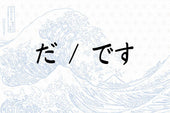
Understanding だ (da) and です (desu) in Japanese: Meaning and Usage
When learning Japanese, one of the first things you’ll come across is だ (da) and です (desu). These words don’t have a ...
-
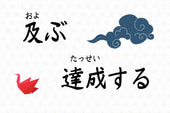
Difference Between 及ぶ (およぶ) and 達成する (たっせいする)
Both 及ぶ and 達成する can relate to "reaching" or "achieving" something, but they have distinct nuances and usage contexts...
-

JLPT N5 Study Guide: A Beginner's Roadmap to Acing the Test
If you’ve just started learning Japanese and are aiming to ace the JLPT N5, you’ll need a solid study guide to help y...
-

Beginner's Guide to Japanese Particles: Learn the Basics
TL;DR: Japanese particles are crucial for structuring sentences, acting like conjunctions or prepositions in English...
-

JLPT N5 Vocabulary List - All 748 Words You Need to Know
Vocabulary is the foundation of any language, and Japanese is no exception. The more you know, the better. Over time ...
-
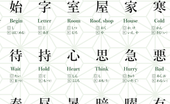
JLPT N4 Kanij List - All 176 Characters You Need To Know
After mastering the JLPT N5 kanji, you're ready to take your Japanese kanji game to the next level. JLPT N4. Let's go...
-
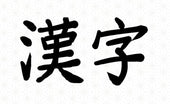
Kanji For Kanji - 漢字
Inception time. Which kanji compose the kanji of "kanji"? The kanji for "kanji" is actually pretty straightforward. I...
-

How to Memorize Katakana Easily: 9 Tips for Beginners
For those diving into Japanese, mastering hiragana and katakana is the first significant challenge. While hiragana o...
-
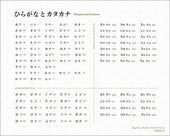
Complete Hiragana and Katakana Chart With All 112 Characters
The very first step for everybody who wants to learn Japanese is to study the hiragana and katakana chart (before lea...
-
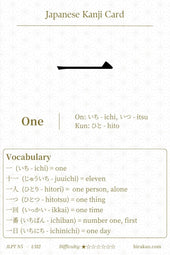
JLPT N5 Kanji: Kanji For One 一 (ichi)
Probably one the most simple kanji to remember, the kanji for 'one' is simply written '一'. Let's see its readings and...
-
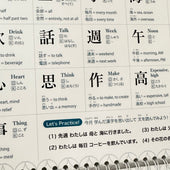
How Long Does It Take to Learn Kanji? A Beginner's Guide
Ask any Japanese student what's the scariest part of learning the language, and they'll say kanji. And they're righ...
-
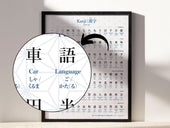
Is it Necessary to Learn Kanji? The Last Answer You'll Ever Need
Many beginners in Japanese wonder whether they should really learn kanji. I know this, because I also wondered when s...
-

How Long Does it Take to Learn Hiragana and Katakana?
As a beginner in Japanese, your first step is diving into the alphabets of Hiragana and Katakana. These are the build...
-

13 Best YouTube Channels to Learn Japanese, From Beginner to Intermediate
YouTube can be an incredible resource for learning Japanese. And best of all, it's free. So we've compiled a list of ...
-
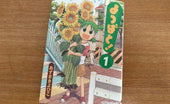
Top 10 Manga for Japanese Language Learners: From Beginners to Intermediates!
If you're learning Japanese, chances are you're interested in manga. So instead of reading texts about Tanaka-san s...
-
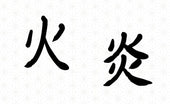
Kanji for 'Fire' in Japanese: 火 or 炎?
Welcome to our enlightening exploration of Japanese kanji! Today, we're igniting our understanding of a primal force ...
-

The Complete Guide to Country Names in Japanese: Say and Pronounce Them Right!
Whether you're planning a trip, learning Japanese, or just curious about how different countries are represented in a...
-
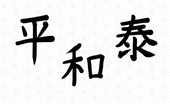
Kanji for Peace: 平, 和, 泰 - The Symbols of Harmony
You might be wondering what are the Japanese symbols for 'Peace'. In this article, we're diving deep into this univer...
-
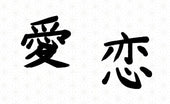
Kanji for 'Love': How and When to Use 愛 and 恋
Welcome to our journey into the world of Japanese kanji! Today, we're delving into one of the most heartwarming and p...
-
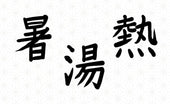
Kanji for 'Hot' in Japanese: 暑, 湯, and 熱 - A Comprehensive Guide
Welcome to our journey into the world of Japanese kanji! Today, we're going to delve into an exciting and essential c...
-
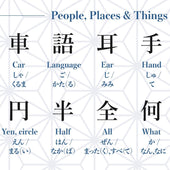
JLPT N5 Kanji List - All 112 Characters You Need To Know
Below we've listed all 112 JLPT N5 level kanji along with their English meaning, readings, and two accompanying vocab...

![まで – Expressing “Until” and “Up To” in Japanese [JLPT N5]](http://hirakan.com/cdn/shop/articles/until-up-to.jpg?v=1765093405&width=170)
![から – Expressing “Because” and “From/Since” in Japanese [JLPT N5]](http://hirakan.com/cdn/shop/articles/because-from_since.jpg?v=1765093285&width=170)
![や – Listing Examples with “And, Among Others” in Japanese [JLPT N5]](http://hirakan.com/cdn/shop/articles/and.jpg?v=1765093138&width=170)
![か – Forming Questions and Saying “Or” in Japanese [JLPT N5]](http://hirakan.com/cdn/shop/articles/ka-questions.jpg?v=1763787134&width=170)
![も – Saying “Also” and “Too” in Japanese [JLPT N5]](http://hirakan.com/cdn/shop/articles/mo-also-too_99f908e6-78d0-4f82-8319-391ef42764bc.jpg?v=1763787251&width=170)
![と – Linking 'And', 'With', and Quotations in Japanese [JLPT N5]](http://hirakan.com/cdn/shop/articles/to-and-with-quotation.jpg?v=1763265110&width=170)
![で – Marking Where and How an Action Happens in Japanese [JLPT N5]](http://hirakan.com/cdn/shop/articles/de-where-how-action-happens.jpg?v=1763264973&width=170)
![へ – Marking Direction ‘Toward’ in Japanese [JLPT N5]](http://hirakan.com/cdn/shop/articles/he-marking-direction.jpg?v=1762667986&width=170)
![に – Marking Time, Destinations, and Recipients in Japanese [JLPT N5]](http://hirakan.com/cdn/shop/articles/ni-marking-destination.jpg?v=1762667846&width=170)
![の – Possession and Noun Linking in Japanese [JLPT N5]](http://hirakan.com/cdn/shop/articles/no-possession-and-noun-linking.jpg?v=1761961297&width=170)
![を – Marking the Direct Object in Japanese [JLPT N5]](http://hirakan.com/cdn/shop/articles/o-direct-object.jpg?v=1761960990&width=170)
![は (wa) – Topic Marker and Contrast in Japanese [JLPT N5]](http://hirakan.com/cdn/shop/articles/wa-topic-marker.jpg?v=1761385996&width=170)
![じゃない・ではありません – Expressing 'Is/Was Not' in Japanese [JLPT N5]](http://hirakan.com/cdn/shop/articles/janai-dehaarimasen_2594963b-531e-4f4d-a9b0-361010e0a720.jpg?v=1760865884&width=170)
![だ・です/だった・でした – Saying ‘to be’ in Japanese [JLPT N5]](http://hirakan.com/cdn/shop/articles/da-desu-datta-deshita_58bbc732-53fd-48da-83c7-4e477e7cc0b2.jpg?v=1760864506&width=170)























